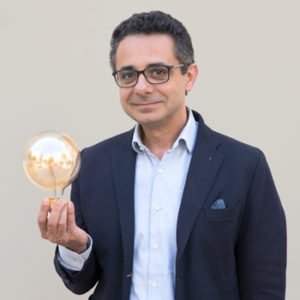My research activity is focused on complexity science and its interdisciplinary applications. Along the past years, I have been active in several fields from granular media, to complexity and information theory, from social dynamics to sustainability. My very recent KREYON project (www.kreyon.net) concerned “Unfolding the dynamics of creativity, novelties and innovation”. In this context, I am interested in understanding and modelling how the “new” enters our lives in its multiform instantiations: personal novelties or global innovation. To this end I’m blending, in a unitary interdisciplinary effort, three main activities: web-based experiments, data science and theoretical modeling. Key to this endeavor is to grasp the structure and the dynamics of the “space of possibilities” in order to come up with a solid mathematical modelling of the way systems – biological, technological, social – explore the new at the individual and collective levels. Exploiting the knowledge of the way the space of possibilities is explored can be helpful to conceive the next generation of Artificial Intelligent algorithms able to cope with the occurrence of novelties, bridging in this way the gap between inference and unanticipated events.


